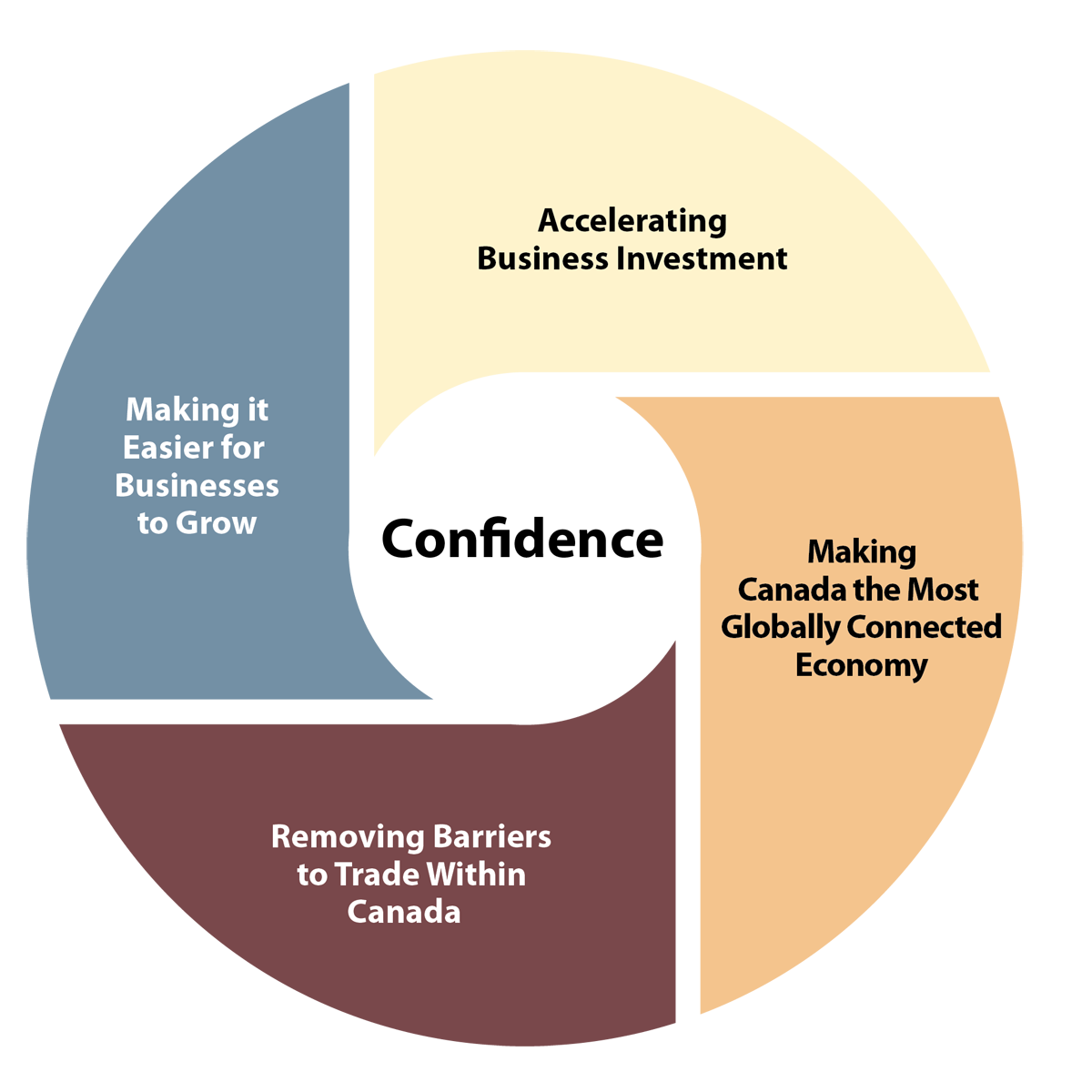Backgrounder: Confidence in Canada's Economic Future
The Government of Canada has been focused on strengthening and growing the middle class, and on building an economy that works for everyone—one where Canadians have more opportunities to succeed, and where businesses can invest with confidence to create jobs, grow their businesses, and deliver strong economic growth that benefits all Canadians.
In the Fall Economic Statement 2018, the Government is building on the hard work of Canadians, and on earlier investments aimed at growing the economy. New measures will strengthen confidence in Canada and encourage investment, supporting Canadian businesses as they grow, expand into new markets and create more good, well-paying jobs.
The Government is taking action now to support businesses that are making new capital investments in productive assets. This approach will create a meaningful tax advantage to invest in Canada by providing accelerated deductions on all capital assets. These measures will help attract business investment to Canada, creating and protecting jobs in Canada, and ensure that Canada remains competitive in light of the U.S. tax reform.
Making Canada the Most Globally Connected Economy
Since 2015, the Government has been working steadily to achieve a key goal—securing trade opportunities that can make Canada the most globally connected economy in the world. Those efforts have already delivered results: thanks to the United States-Mexico-Canada Agreement (USMCA), the Canada-European Union Comprehensive Economic and Trade Agreement (CETA), and the Comprehensive and Progressive Agreement for Trans-Pacific Partnership (CPTPP), Canada now has comprehensive free trade agreements with countries representing two-thirds of the world's total gross domestic product, and is the only Group of Seven (G7) country that has trade agreements with all other G7 nations.
To build on this success, the Government of Canada is also taking steps to improve access to new markets for Canadian exports. The Fall Economic Statement proposes an Export Diversification Strategy aimed at increasing Canada's overseas exports by 50 per cent by 2025, with a focus on three key components: investing in infrastructure to support trade; investing to help Canadian businesses export and grow; and enhancing trade services for Canadian exporters.
Removing Barriers to Trade Within Canada
Removing barriers to trade between provinces and territories will also help to drive stronger economic growth. The recent Canadian Free Trade Agreement, which entered into force in July 2017, is an important step in this direction. The Fall Economic Statement reaffirms a commitment to freer trade within Canada, and proposes the Government work with provincial and territorial partners to accelerate action to remove regulatory and other barriers in four key areas:
- The transport of goods between provinces and territories;
- Food regulations and inspection rules across the country;
- The construction sector, including the harmonization of building codes across Canada; and
- The facilitation of greater trade in alcohol between provinces and territories.
Making it Easier for Businesses to Grow
Regulations act as the "rule book" for how businesses must operate, and play an essential role in protecting the health and safety of Canadians, and safeguarding the natural environment. Over time, however, regulations can accumulate, become outdated, and result in unnecessary barriers to innovation and economic growth.
To address this competitiveness challenge, the Fall Economic Statement announces that the Government proposes to:
- Review legislation to assess whether opportunities exist to modernize the mandates of regulatory departments to more fully integrate the importance of regulatory efficiency and economic growth. This would encourage regulators to simplify regulatory proposals and take effectiveness and economic impacts into account, while continuing to prioritize the health and safety of Canadians, and the protection of the environment.
- Introduce an Annual Modernization Bill, starting in 2019, to remove outdated or redundant regulatory requirements, and to allow for the updating of regulations. This annual exercise will help keep regulations current, to better reflect public policy and business realities, challenges, and opportunities.
- Create an External Advisory Committee on Regulatory Competitiveness. This committee will help Ministers and regulators identify and introduce regulatory changes to promote innovation and economic growth that works for everyone.
- Launch a Centre for Regulatory Innovation to speed up the integration, adoption, and commercialization of new approaches and emerging technologies. The Centre will develop guidelines and tools to support different regulatory approaches. It will also help businesses understand existing regulatory requirements and connect them with relevant regulators, to get them the help they need to develop and deploy new products and services.
- Provide funding for federal departments and agencies to strengthen their ability to consider economic and competitiveness needs when designing and implementing regulations.
- Enact policy changes and introduce regulatory measures that respond to recommendations from the business community. The result will be a simpler, clearer and modernized regulatory system that will support the development of innovative approaches and products.
Helping Canadian Innovators Add Value, Succeed and Grow
To position Canada as a top destination for businesses to invest, innovate, grow, and create jobs, the Government has created a suite of programs focused on innovation. One flagship program is the Strategic Innovation Fund, introduced in Budget 2017, which has attracted and supported high-quality and innovative business investment in Canada.
The Government proposes to provide a further $800 million over five years to the Strategic Innovation Fund, which will continue to be available to support innovative investments across the country and in all economic sectors, $100 million of which will focus on providing support to the forest sector.

- Date modified: